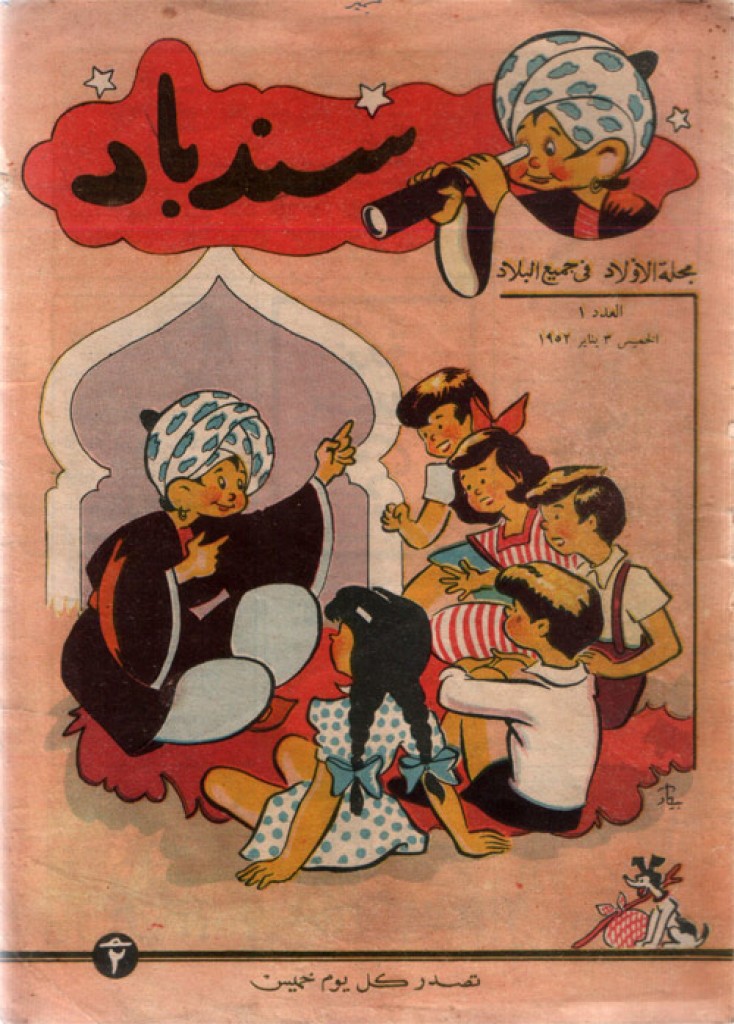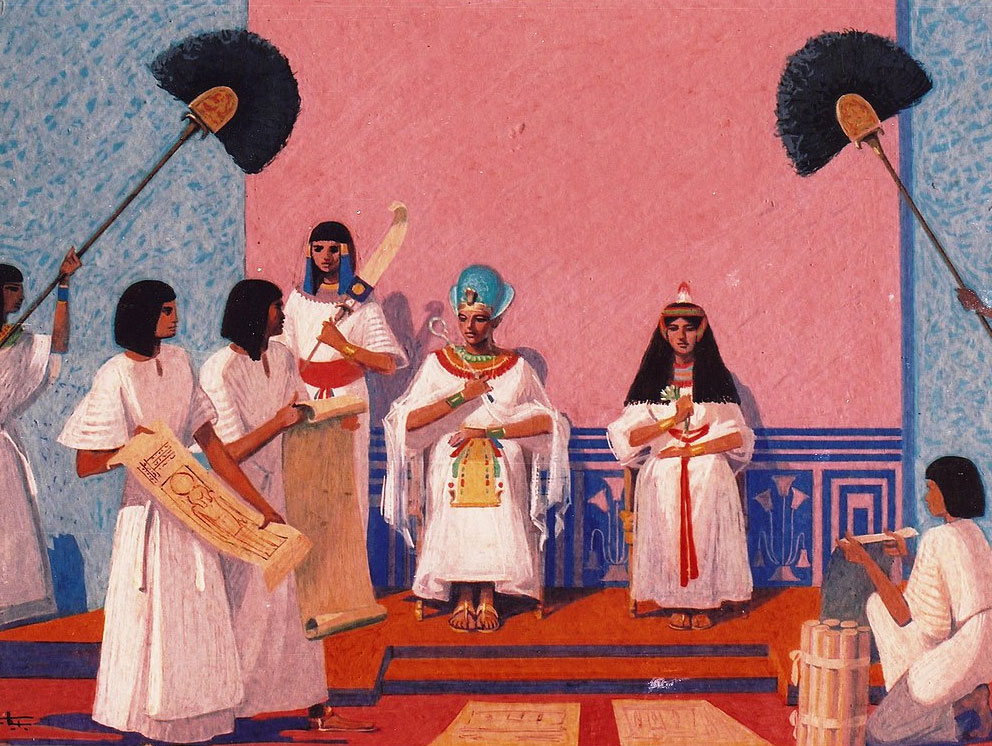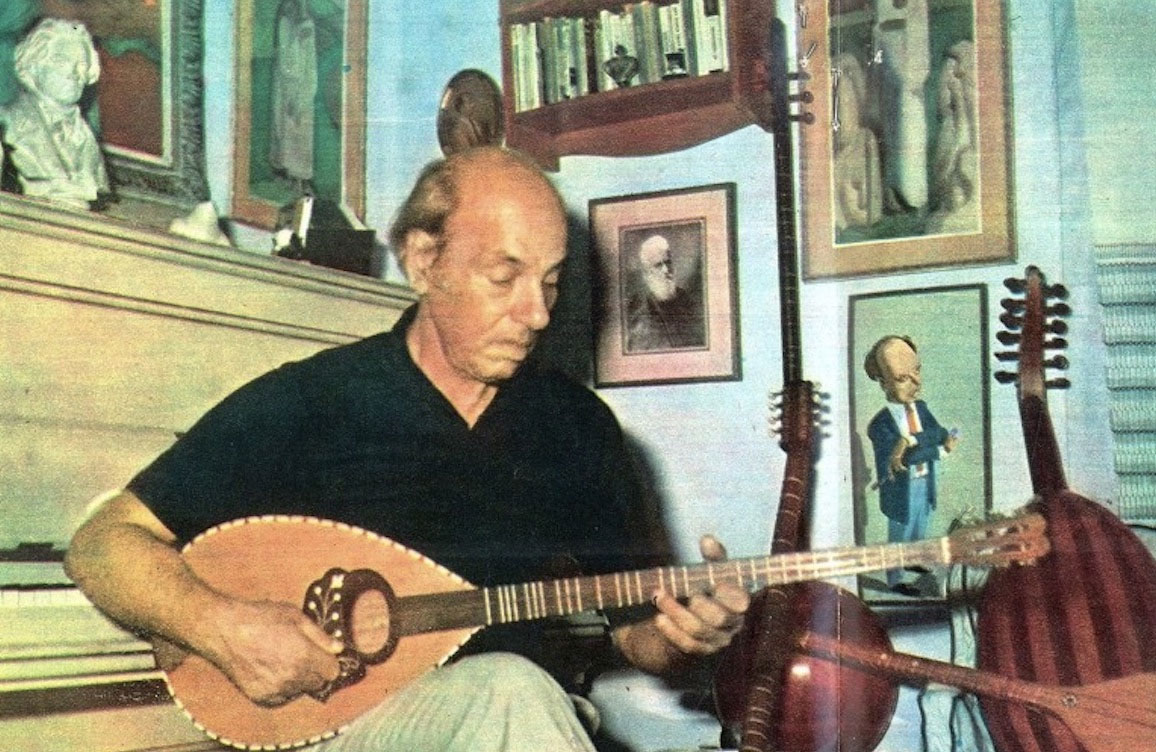Cover illustrations for the magazine Sinbad.
Hussein Amin Bicar (also written as Hussein Amin Bikar) was a prominent Egyptian illustrator, painter, photographer, poet, musician and philosopher. With his sophisticated drawings, he ranks as one of the earliest Arabic children's book illustrators. He was a lead artist in the long-running Egyptian comic magazine Sinbad. Read by millions, Bicar's work popularized comics in his home country, and has influenced generations of Egyptian comic artists.
Early life
Hussein Amin Ibrahim Bicar (حسين أمين ب يكار) was born in 1913 in Alexandria's Anfoushi neighborhood. His family was of distant Cypriot descent, and followers of the Bahá'í Faith in Egypt. As a child, Bicar was already gifted with many talents. From the age of eight, he learned to play the lute, and by nine, started giving lute lessons to women in Alexandria whose culture did not permit adult male teachers. In 1933, he graduated from the Cairo School of Fine Arts, where many of his teachers were Europeans. One of his tutors was the future portrait artist Ahmad Sabri, who remained his mentor and lifelong friend. Early in his career, Bicar focused on painting portraits and folkloric scenes.
Teacher
For over sixty years, Hussein Bicar worked as an art teacher, first at elementary and secondary schools, then at universities. He also taught in Morocco at the invitation of the Moroccan government, and traveled extensively throughout Europe and Africa. Bicar was visiting Berlin when World War II was declared. Back in Egypt in 1943, he became the assistant of his former professor Ahmed Sabri at the Faculty of Fine Arts, and eventually worked himself up as the chairman of the school's painting department. In this role, he inspired many young painters to seek inspiration in Egyptian heritage.
Illustrator
Starting in 1945, Bicar worked for the newspaper Akhbar Al-Yom ("Today's News"), not only as illustrator but also as writer of critical articles and narrative poems (such as a series of four-line verses called 'The Rubaiyat'). Between 1959 and 1962, he created illustrated reports from foreign countries like Ethiopia, Syria, Algeria, Morocco, Tunisia and Spain. Inspired by Pharaonic art, with its harmony, serenity and mysticism, Bicar helped initiate a style of journalistic illustration that crossed borders with fine art. Bicar also illustrated several children's books, beginning with a 1943 edition of Taha Hussein's 'Al Ayam' ('The Stream of Days'), which was the first illustrated book published in Egypt. Later in his career, he also wrote and drew several books himself.
Sinbad
Bicar was also the original illustrator and a driving force behind the monthly children's magazine Sinbad (سندباد, also written as Sindibad), of which the first issue was launched on 3 January 1952. The publication was distributed by the company Dar El Maaref and centered around the legendary literary character Sinbad the Sailor from the fairy tale collection 'Arabian Nights'. Together with the Italian Mario Morelli di Popolo, Bicar formed the magazine's main art team, while writer and magazine founder Mohammed Saeed al-Arian served as editor. Bicar illustrated covers as well as the comic series 'Chaddad & Aouad', which he made in the tradition of the French Épinal prints, as picture stories with text captions. Other contributors to the magazine were the artists Zahdi Al-Adwy, Muhyiddin Al-Labbad, Abu Zaid and Taeb and the writer Kamal Al-Mallakh. The final issue appeared in July 1960.
Painting for the documentary 'The Eighth Wonder'.
Fine artist
As a fine artist, Bicar made watercolors, oil paintings and tempras. Combining spiritual Egyptian themes with his own philosophies, Bicar created art with a message. The subjects of his portraits seem to glow and exude their personalities. Besides portraits, he was also known for his oil paintings depicting graceful peasant women, stylized Nubian scenes and Pharaonic themes, all rendered in sparse, minimalistic lines. Amongst the most magnificent works of Bicar was the set of paintings done for 'The Eighth Wonder', a 1973 documentary narrating the tale of Ramses II Temple in Abu Simbel in southern Egypt.
Recognition and death
A major figure for over fifty years in the Cairo art scene, Hussein Bicar's innovating legacy as musician, poet, painter, teacher, illustrator, reporter and storywriter has influenced generations of new creators. Throughout his career, he was awarded and decorated for his achievements on many occasions. This included a Medal of pride from the government of Morocco (1942), a patent of appreciation from Minister of Culture in Syria (1961), a First Class Medal of Science and Art (1967), the Honorary Award of the Biennale of Alexandria (1970), a Certificate of Honor from the Art Academy (1972), the Gamal Abdel Nasser Award with participation of the Soviet Union (1975), the State Merit Award (1978) and the National Certificate of Appreciation and Medal of Honor (1980). Two years before his death, Bicar received the Mubarak prize. He passed away at age 89 in 2002, two months short of his 90th birthday. On 2 January 2017, a Google Doodle commemorated Hussein Amin Bicar's 104th birthday.






